"The most stylistically experimental film among Kaneko’s works but also one of the most self-reflexive Japanese films of the interwar period. In this film, Kaneko featured the process of 9.5mm filmmaking by means of visual experiments and abstraction. By constructing the film in a way to trace the process of shooting, self-developing, editing, and projecting a film, he manipulated montage and multiple exposures as well as the use of light and shadow, while he elaborated the use of close-up shots that captured film devices and the filmmaker (presumably Kaneko himself) at work... Many advanced amateurs considered the process of filmmaking as an essential part of defining the idea of amateurishness. Unlike commercial productions that involved many casts and crews, amateur productions had the privilege of creating a work individually by going through the entire process of filmmaking, which allows the filmmaker to make every decision on his or her own. Kaneko’s Film Study 9 1/2 visualized this process by reflecting his artistic sensibilities." - Noriko Morisue, "Filming the Everyday: History, Theory, and Aesthetics of Amateur Cinema in Interwar and Wartime Japan" (Yale University: PhD Dissertation, 2020): 111.
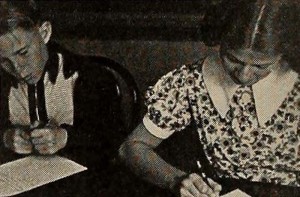
"First Film and When the Cat's Away, a double header entry, which takes honors jointly because of the strong relationship between the two, is the production of the Cinema Club of Lowell Junior High School, at Long Beach. Calif., and of the club's faculty adviser, Helen Rees Clifford. First Film, largely the work of Miss Clifford, summarizes the Junior High School group's experiences in producing When the Cat's Away, which is entirely the achievement of the youngsters. Together, the two films present a clear and concise picture of the initial production of a film by a junior high school movie club, from scenario writing and movie planning to the completed opus, ready for its premiere. So, in these two reels, one sees how the job of teaching movie making technique to youngsters, of ages from eleven to fourteen, can be handled efficiently and happily, and one learns how clear and coherent a little picture can be produced as a starter. Few high school photoplay clubs have begun so well and with so little lost motion. Very few high school first films are as clear and competent as When the Cat's Away." Movie Makers, Dec. 1938, 618.
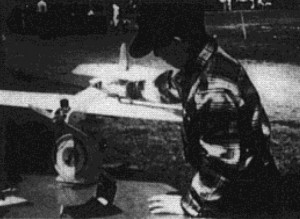
"Mother gives Junior a model airplane kit and immediately, he sets about the task of assembly while Dad works on the opposite side of the table editing motion pictures. During the night, Junior goes into a dream sequence of flying his airplane. Later he flies his toy in a local contest and wins the big prize. A likely event in the life of a boy" PSA Journal, Oct. 1961, 48.
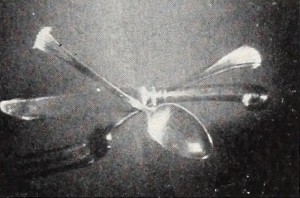
"Color, light and movement are skillfully and pleasurably combined in Jose M. Pavon's Form in Motion, an experimental film that "experiments" in the best sense of that word. Employing such simple properties as shower curtains, knives and forks and Mexican glassware, Mr. Pavon has used both his camera and his imagination to great effect. Unfortunately, the film from time to time moves beyond the subject matter limits set up by its title, an inconsistency which mars slightly the overall impact." Movie Makers, Dec. 1950, 467.
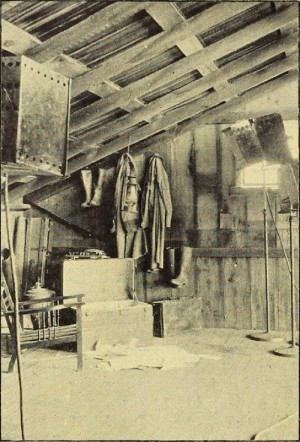
"Galleon Gold, 1600 ft., 16 mm., produced by the San Jose Players under the leadership of John C. Waterhouse, strikes a more sober note. This entertaining drama of the youth of a venerable Spanish family, who discover the treasure trove of the Conquistadores in time to save the family hacienda from the encroachment of the lime quarries, contains much good photography, a smooth continuity, experienced acting and first rate direction." Movie Makers, Sept. 1930, 569.
"Galleon Gold, 1600 ft., 16mm., produced by the San Jose Players, deserves special mention for its smooth flowing continuity alone. Although the difficulty of securing a lucid continuity is greatly increased in a longer dramatic picture, the producers of this film have achieved perfect clarity. This film was made during a summer vacation at a mountain ranch and it seemed at first that the lack of electric current for lighting would be an insuperable obstacle since the script called for many interior scenes. The problem was finally solved by a portable motor generator driven by a gas engine which, with proper lighting equipment, made ample illumination possible." Movie Makers, Dec. 1930, 788.
"Harrison and Harrison's offer of the firm's color meter in leather case, with six 1 1/4 -inch meter-matched filters in leather filter fold, was awarded Eugene L. Ritzmann of Berkeley, Cal., for his 'Garden Life.' The entrant has been making amateur movies for nine years, and his skilled work in putting on the screen in color by means of controlled timing the blooming of flowers demonstrated that his period of apprenticeship has long since expired. If a word of suggestion and distinctly not of criticism might be offered it would be the film would have greater value for the uninformed if titles should be inserted identifying the various flowers. The subject caused some tough eggs of the male persuasion to sit up and take notice. What it will do to the world of womankind it is not hard to imagine." American Cinematographer, Jan. 1938, 28.
"Ghost Town" was highly appreciated by those directors and cameramen sitting on the judging board who had once worked in New Jersey. This picture shows all of the deserted movie studios in New Jersey." American Cinematographer, Feb. 1936, 73.
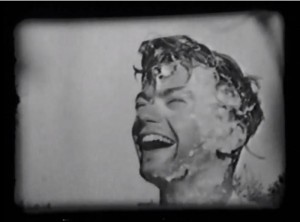
"Members of the National Film Society of Canada (Vancouver Branch) parody the early experimental works of American avant-garde filmmaker Maya Deren [to whom the film is dedicated]." (BC Archives)
The film is subtitled: "A conflict between two philosophies of time and space."
The film was shot in an area of sand dunes on Sea Island in Richmond, BC, near the location of Vancouver International Airport.
"The Golden West, as this amateur movie was titled by its maker. whose identifty is lost, tours America's Riviera," as the film rather grandiosely labels the Los Angeles region.... It focuses on public places and seldom the filmmaker's family members, who are onscreen largely to illustrate local customs...." (Scott Simmon) During a ride on a blimp, the filmmaker shoots aerial footage of Los Angeles and area, including some of the local film studios. Other sequences include a visit with B-movie actor George O'Brien, on set at RKO, and a Shriners Parade at the Los Angeles Memorial Colosseum, where floodlights illuminate floats representing various Hollywood studios.
The filmmaker is not credited. In archivist Lynne Kirste's commentary for the excerpt in Treasures 5, he is described as an unidentified amateur filmmaker from Pennsylvania.
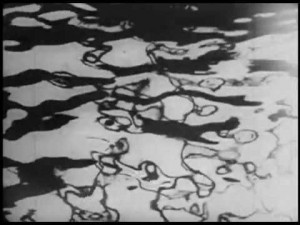
"This film is a study of water in the new manner: A series of photographic shots of the reflections of boats, ferry houses, docks, etc., on water and the whole resulting in a chain of pure abstract patterns of shapes in water. Steiner achieves an astonishing tempo as his film advances. The picture is bound to attract wide attention and a great deal of discussion wherever is shown." Photoplay, Nov. 1929, 67
Total Pages: 9